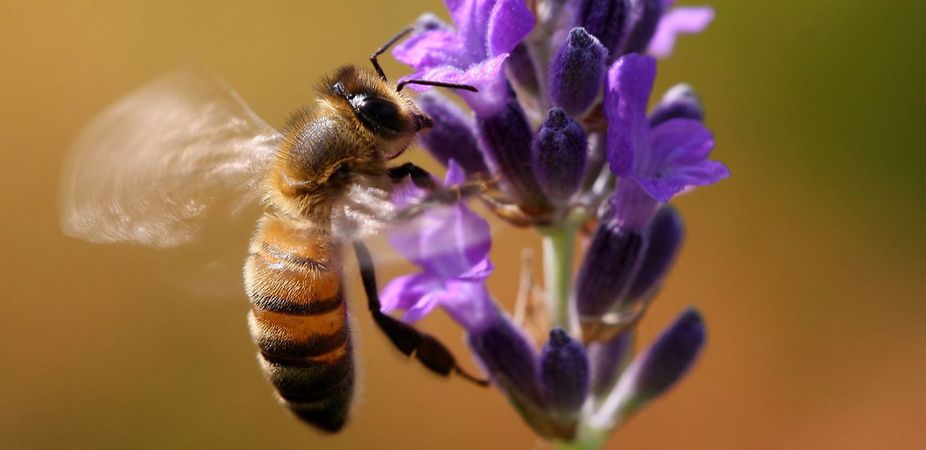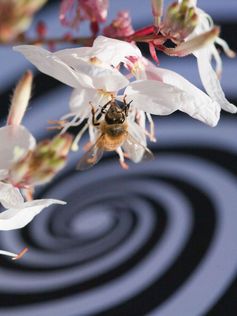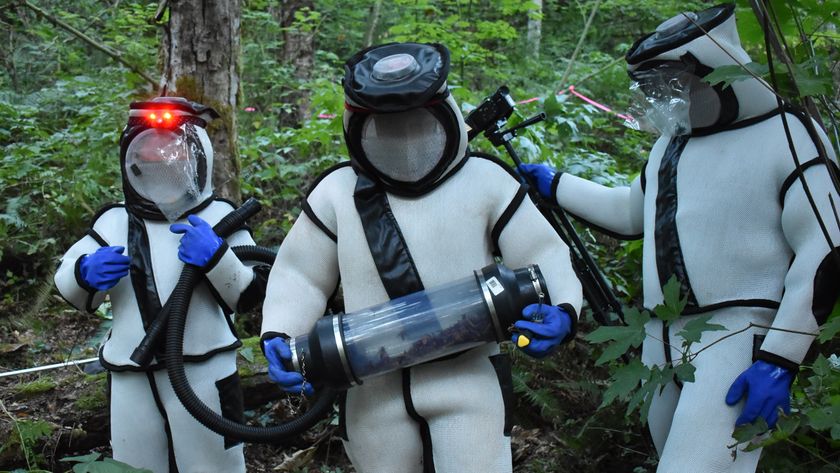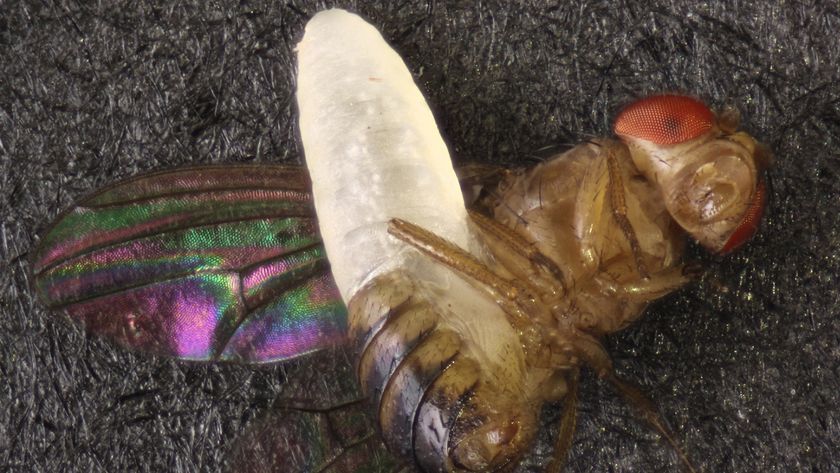
How to Land Safely on a Vertical Surface, Bee-Style (Op-Ed)

This article was originally published at The Conversation. The publication contributed the article to LiveScience's Expert Voices: Op-Ed & Insights.
Landing is arguably the most nerve-racking element of any flight. To execute a safe landing, a pilot needs to know the plane’s speed and its distance from the landing surface. The pilot’s challenge is to bring the aircraft’s speed close to zero at the exact moment when wheels meet land. This is not a simple feat.
Nonetheless, bees land perfectly without the benefits of human-like cognition, complex instrumentation and stereoscopic (3D) vision. How do they do it?
This is the question that Lund University’s Emily Baird and her team of colleagues asked in their study released today in the journal Proceedings of the National Academy of Sciences.
Landing gear
When landing on a horizontal surface, honey bees use something called optic flow to determine their speed. Optic flow allows bees (and us) to determine how quickly we are moving by the speed at which objects in our view pass over our eyes.
If you drive at speed down a tree-lined road, the trunks move quickly past your eyes and you know you are moving quickly. If you drive slowly, the trees appear to move slower.
The same is true for a flying bee. But bees often need to land on vertical surfaces, such as flower petals, in order to obtain pollen or nectar. How do they determine their speed when this type of optic flow is not available to them?
Sign up for the Live Science daily newsletter now
Get the world’s most fascinating discoveries delivered straight to your inbox.

Baird and her colleagues trained free-flying bees to land on an experimental apparatus composed of a vertically oriented, circular, perspex disc, with a tube in the middle connected to a sugar feeder.
Once the bees landed on the tube, they could crawl through it to access the feeder. The researchers videotaped the bees approaching the apparatus and analysed the speed and trajectory of the flight and landing. They found that the closer the bee got to the target, the slower she flew.
The experiment was repeated several times, each iteration with a different pattern on the disc (checkerboard, a concentric ring and a pie-slice pattern). Bees slowed down at a more or less constant speed, but only when presented with the checkerboard and concentric circle patterns. When they approached the pie-slice pattern, the bees didn’t slow down until they almost hit the disc.
What the researchers realised was that the checkerboard and concentric ring patterns appeared (to the bee) to expand as she approached the disc while the pie-slice pattern did not do so as effectively. Baird and her colleagues suspected that bees used the apparent expanding image to calibrate their speed by maintaining a constant speed of approach; the image on the disc appeared to expand at a constant rate.
To test whether the bees were using the rate of apparent expansion of the image to calibrate their speeds, the researchers used a familiar optical illusion. By rotating a spiral in a clockwise direction, it appears to expand. Rotate it anti-clockwise, and it appears to contract (see the video below for a demonstration).
Once Baird and colleagues determined that bees presented with a disc displaying a stationary spiral behaved as they did when presented with the checkerboard and concentric ring patterns, they proceeded to measure the bees’ approach speeds to rotating spirals.
When the spiral appeared to expand, the bees slowed their approach as if they perceived that they were closer to the target than they were in reality. When the spiral appeared to contract, the bees sped up their approach; as if they perceived they were further away, just as the researchers predicted.
Despite this Matrix-like disruption to the bees’ perception, the bees managed to land on the vertical surface of the disc without crashing, presumably because once they were close enough to the target, the image generated on their eyes no longer gave sufficient information that could be translated to approach speed.
From bees to aircraft
Bees use their perceived rate of expansion of the image of their landing surface in order to modulate their speed of approach, allowing them to land safely on vertical surfaces. Other animals that need to execute landings may also use this strategy.
In addition, the researchers mathematically modelled this relationship between perception and velocity so one day soon we may even use this relatively simple algorithm to land aircraft on many types of surfaces, without the need to know the exact distance from the aircraft to the landing zone.
Because Baird and colleagues investigated bee flight and landing, one day we may be able to land remotely piloted aircraft on uneven, vertical surfaces, such as part of a collapsed building, allowing us to locate potential survivors. Not bad, hey?
Marianne Peso receives funding from Macquarie University and the US Department of Agriculture.
This article was originally published at The Conversation. Read the original article. The views expressed are those of the author and do not necessarily reflect the views of the publisher. This version of the article was originally published on LiveScience.













